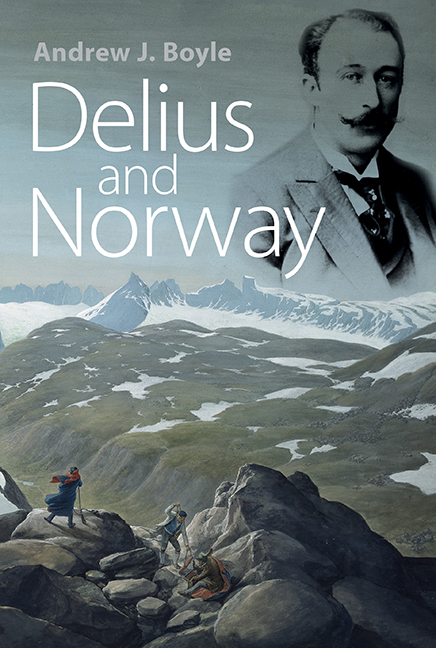Book contents
- Frontmatter
- Dedication
- Contents
- List of illustrations and tables
- Preface
- Abbreviations
- Selected glossary of landscape terms used in place names
- 1 Norway's awakening
- 2 1862–1888: Bradford, Florida and Leipzig
- 3 1888–1889: With Grieg on the heights
- 4 1890–1891: ‘C'est de la Norderie’
- 5 1892–1895: Norway lost
- 6 1896: Norway regained
- 7 1897: Front page news
- 8 1898–1902: Unshakeable self-belief
- 9 1903–1907: Breakthrough in Germany and England
- 10 1908–1912: Changes of direction
- 11 1912–1918: High hills, dark forests
- 12 1919–1934: Myth and reality in Lesjaskog
- Appendix I List of visits to Norway
- Appendix II Works with Norwegian and Danish texts and associations
- Selected bibliography and archival sources
- Index
1 - Norway's awakening
Published online by Cambridge University Press: 30 August 2017
- Frontmatter
- Dedication
- Contents
- List of illustrations and tables
- Preface
- Abbreviations
- Selected glossary of landscape terms used in place names
- 1 Norway's awakening
- 2 1862–1888: Bradford, Florida and Leipzig
- 3 1888–1889: With Grieg on the heights
- 4 1890–1891: ‘C'est de la Norderie’
- 5 1892–1895: Norway lost
- 6 1896: Norway regained
- 7 1897: Front page news
- 8 1898–1902: Unshakeable self-belief
- 9 1903–1907: Breakthrough in Germany and England
- 10 1908–1912: Changes of direction
- 11 1912–1918: High hills, dark forests
- 12 1919–1934: Myth and reality in Lesjaskog
- Appendix I List of visits to Norway
- Appendix II Works with Norwegian and Danish texts and associations
- Selected bibliography and archival sources
- Index
Summary
‘He's either completely lost his mind, or he's English’
Norwegian saying, mid-nineteenth centuryIn the early afternoon of 28 July 1889, three tired hikers arrived at the mountain cabin at Eidsbugarden. They had been travelling inland from the west coast for several days, but it was here at the portal to the Jotunheim mountains they felt that their summer tour would really begin. The eldest of the three was Edvard Grieg (forty-six), the youngest was Fritz Delius (twenty-seven), and for both this journey was the fulfilment of a long-held desire. Since getting to know Delius two years earlier, Grieg had been seeking an opportunity to introduce him to Jotunheimen. Delius had been under the influence of Grieg's music since his boyhood, and now the Norwegian was to be his personal guide to Norway's most magnificent nature. The third member of the trio was Christian Sinding (thirty-three). Emerging from an obsessive and secret love affair, he was looking forward to this journey as a key to regaining his equanimity.
Around the dinner table that evening a dozen travellers gathered. Among them was a Norwegian with a huge beard, a historian who, in the coming battle for Norwegian independence and national realisation, would have an even greater role to play than Grieg. For three hundred years the country had been governed from Denmark. In the aftermath of the Napoleonic Wars, Norway entered into a union with Sweden in which there was virtual political equality. As the tide of Romantic nationalism swept Europe in the nineteenth century, Norwegian nationalists demanded full sovereignty for their nation. Once independence was achieved in 1905, Norwegian commentators would regard Professor Ernst Sars as the spiritual father of the victory.
Grieg and Sars. At this first, impromptu meeting between two giants of Norwegian cultural life, Delius was a witness. It was a remarkable moment and can serve as a fitting point of departure for this chapter about the Norway that Delius would have experienced at the close of the nineteenth century. For here, seated at the table at Eidsbugarden, were representatives of the dualism that came to typify Norway's political and cultural awakening. Everyone in the cabin, Sars and Grieg included, would have been attracted there by Old Norway: the Norway of the free-minded peasant, the mountain shepherd, the summer farm hanging from a seemingly inaccessible hillside.
- Type
- Chapter
- Information
- Delius and Norway , pp. 1 - 14Publisher: Boydell & BrewerPrint publication year: 2017

